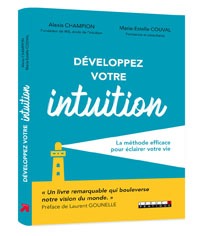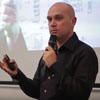
Adams, M. H. (1985). Variability in remote viewing performance: Possible relationship to the geomagnetic field. Tufts University, Medford MA, Parapsychological Association.
Alcock, J. E. (1990). Science and supernature: A critical appraisal of parapsychology, (1990). Science and supernature: A critical appraisal of parapsychology. 186 pp. Amherst, NY, US: Prometheus Books.
Bisaha, J. D., B. (1979). Multiple subject and long-distance precognitive remote viewing of geographical locations. Mind at Large: Institute of Electrical and Electronic Engineers Symposia on the Nature of Extrasensory Perception. C. Tart, Puthoff, H. & Targ, R. New York, Praeger: 107-124.
Blanke, O., S. Ortigue, et al. (2002). «Stimulating illusory own-body perceptions.» Nature 419(6904): 269-70.
Delanoy, D. L. (1989). Approaches to the target: A time for reexamination. Paper, Parapsychological Association, San Diego, California, 51-58.
Dobyns, Y., B. Dunne, et al. (1994). Reply to Hansen, Utts, and Markwick’s «Statistical and Methodological Problems of the PEAR Remote Viewing Experiments. E. Cook & D.
Delaney (Eds.) Research in Parapsychology, 1991 Metuchen, N.J.: Scarecrow Press, 1994, pp.108-111.
Dobyns, Y. D. B. J. R. and R. Nelson (1991). Response to Hansen, Uts & Markwick: Statistical and Methodological Problems of the PEAR Remote Viewig (sic) Experiments. Paper, Parapsychological Associaton, Heidelberg, 1991.
Dobyns, Y. H. D. B. J. J. R. G. and R. D. Nelson (1992). Response to Hansen, Utts, and Markwick: Statistical and methodological problems of the PEAR remote viewing (sic) experiments. Journal of Parapsychology, 56, 115-146.
Dunne, B. J. and R. G. Jahn (2003). «Information and uncertainty in remote perception research.» Journal of Scientific Exploration 17(2): 207-241.
Giesler, P. V. (1986). «GESP testing of shamanic cultists: Three studies and an evaluation of dramatic upsets during testing.» Journal of Parapsychology 50(2. ): 123-153.
Haisch, B. (1996). An Assessment of the Evidence for Psychic Functioning. Journal of Scientific Exploration Vol. 10, No. 1.
Hansen, G. P., J. Utts, et al. (1994). Statistical and Methodological Problems of the PEAR Remote Viewing Experiments. E. Cook & D. Delaney (Eds.) Research in Parapsychology, 1991 Metuchen, N.J.: Scarecrow Press, 1994, pp.103-105.
Hansen, G. P. U. J. and B. Markwick (1992). Critique of the PEAR remote-viewing experiments. Journal of Parapsychology, 56, 97-114.
Hansen, G. U. J. and B. Markwick (1991). Statistical and methodological problems of the PEAR remote viewing experiments. Paper, Parapsychological Association, Heidelberg, Germany, August 8-11, 1991, 189-204.
Hansen, U. and Markwick (1991). Statistical and methodological problems of the PEAR remote viewing experiments. Paper, Parapsychological Association, Heidelberg, Germany, August 8-11, 1991, 189-204.
Harary, K. Response to reply of Schwartz and de Mattei to «On the discovery of an American brig». paper, presumably submitted to Haspr.
Harary, K. (1992). The goose that laid the silver eggs: A criticism of psi and silver futures forecasting. Journal of the American Society for Psychical Research, 86, 375-410.
Hearne, K. M. T. (1989). A forced-choice remote viewing experiment. Journal of the Society for Psychical Research, 55 275-277.
Houck, J. (1985). Use of Associative Remote Viewing Computer Program. Privately circulated paper.
Houck, J. (1986). Associative Remote Viewing. Privately circulated paper.
Houck, J. (1986). Chance Distributions. Privately circulated paper.
Houck, J. (1986). Results of ARV Experiment. Privately circulated paper.
Houck, J. and G. Duke (1989). Remote viewing workshop at the second Archaeus Congress. Artifex, 8, No. 4, 21-26.
Houck, J. N. R. D. and E. A. Rauscher (1986). Addendum to «Los Angeles Area to San Francisco Bay Area Remote Perception Experiment»: A reevaluation. Psi Research, 5 108.
Hubbard, G. S. M. E. C. and H. E. Puthoff (1986). Possible production of photons during a remote-viewing task: Preliminary results. In Weiner & D. Radin (Eds.), Research in Parapsychology 1985. Metuchenn, N. J.: Scarecrow Press, 1986, 66-70.
Humphrey, B. S. M. E. C. and J. M. Utts (1989). Fuzzy set technology in the analysis of remote viewing. In Henkel & R. E. Berger (Eds.), Research in Parapsychology 1988. Metuchenn, N. J.: Scarecrow Press, 1989, 78.
Hyman, R. (1988). «Psi experiments: do the best parapsychological experiments justify the claims for psi?» Experientia 44(4): 315-22.
Hyman, R. (1989). The elusive quarry: A scientific appraisal of psychical research, (1989). The elusive quarry: A scientific appraisal of psychical research. 447 pp. Amherst, NY, US: Prometheus Books.
Hyman, R. (1995). «Evaluation of the program on anomalous mental phenomena.» Journal of Parapsychology 59.
Hyman, R. (1996). «Evaluation of a program on anomalous mental phenomena.» Journal of Scientific Exploration 10(1): 31-58.
Koren, S. A. and M. A. Persinger (2002). «Possible disruption of remote viewing by complex weak magnetic fields around the stimulus site and the possibility of accessing real phase space: a pilot study.» Percept Mot Skills 95(3 Pt 1): 989-98.
Kress, K. A. (1999). «Parapsychology in intelligence: A personal review and conclusions.» Journal of Scientific Exploration 13(1): 69-85.
Lantz, N. D. M. E. C. and T. Piantanida (1990). Remote viewing: From what time frame does the information originate? In L. A. Henkel & G. R. Schmeidler (Eds.), RIP 1990. Metuchenn, N. J.: Scarecrow Press, 1992, 12.
Marks, D. (1981). «Sensory cues invalidate remote viewing experiments.» Nature 292(5819): 177.
Marks, D. (1981). «Sensory cues invalidate remote viewing experiments [letter].» Nature 292(5819).
May, E. C. (1996). «The American Institutes for Research review of the Department of Defense’s Star Gate program: A commentary.» Journal of Parapsychology 60(1): 3-23.
May, E. C. (1996). The American Institutes for Research Review of the Department of Defense’s STAR GATE Program: A Commentary. Journal of Scientific Exploration Vol. 10, No. 1.
May, E. C. (1998). «Response to «Experiment One of the SAIC Remote Viewing Program: A Critical Re-evaluation».» Journal of Parapsychology 62(4): 309-318.
May, E. C., N. D. Lantz, et al. (1996). «Feedback considerations in anomalous cognition experiment.» Journal of Parapsychology 60(3): 211-226.
May, E. C., J. M. Utts, et al. (1990). «Advances in remote-viewing analysis.» Journal of Parapsychology 54: 193-228.
May, E. C. S. S. J. P. and C. L. James (1994). Managing the Target-Pool Bandwidth: Possible Noise Reduction for Anomalous Cognition Experiements. The Journal of Parapsychology Vol. 58, No. 3. Parapsychological Association, Sept. 1994.
May, E. C. U. J. M. H. B. S. L. W. L. W. F. T. J. and V. V. Trask (1990). Advances in remote-viewing analysis. Journal of Parapsychology, 54, 193-228.
McLenon, J. and R. Hyman (1987). A remote viewing experiment conducted by a skeptic and a believer. Journal of the Center for Scientific Anomalies Research: Zetetic Scholar, Nos. 12/13 21-34.
McMoneagle, J. (1993). Mind Trek: Exploring Consciousness, Time, and Space Through Remote Viewing. Norfolk, Virginia: Hampton Roads, pp. 9-13.
McMoneagle, J. W. (1997). «Perceptions of a paranormal subject.» Journal of Parapsychology 61(2): 97-118.
Nelson, R. D. and B. J. Dunne (1996). Precognitive Remote Perception: Replication of Remote Viewing. Journal of Scientific Exploration Vol. 10, No. 1.
Nelson, R. D., B. J. Dunne, et al. (1996). «Precognitive remote perception: Replication of remote viewing.» Journal of Scientific Exploration 10(1): 109-110.
Neppe, V. M. (2005). «Why parapsychology is amongst the most important of the sciences.» Australian J of Parapsychology 5(1): 4-22.
Persinger, M. A., W. G. Roll, et al. (2002). «Remote viewing with the artist Ingo Swann: neuropsychological profile, electroencephalographic correlates, magnetic resonance imaging (MRI), and possible mechanisms.» Percept Mot Skills 94(3 Pt 1): 927-49.
Puthoff, H.E. & Targ, R. (March, 1976). “A Perceptual Channel for Information Transfer over kilometer distances: Historical perspective and recent research.” Proc. IEEE, Vol. 64, no. 3, March, pp. 329-354.
Puthoff, H. and R. Targ (1981). «Rebuttal of criticisms of remote viewing experiments.» Nature 292(5821): 388.
Puthoff, H. and R. Targ (1981). «Rebuttal of criticisms of remote viewing experiments [letter].» Nature 292(5821).
Puthoff, H. E. (1996). «CIA-initiated remote viewing program at Stanford Research Institute.» Journal of Scientific Exploration 10(1): 63-76.
Puthoff, H. E. (1996). CIA-Initiated Remote Viewing Program at stanford REsearch Institute. Journal of Scientific Exploration Vol. 10, No. 1.
Puthoff, H. T. R. and C. Tart (1980). Resolution in remote viewing studies: Mini-targets. In W. Roll (Ed.), Research in Parapsychology 1979. Metuchenn, NJ: Scarecrow Press, pp. 120-122.
Rao, K. R. (2001). Introduction: Reality, replicability, and lawfulness of psi, Rao, Koneru Ramakrishna (Ed). (2001). Basic research in parapsychology (2nd ed.). (pp. 3-37). viii, 408 pp. Jefferson, NC, US: McFarland & Co.
Rauscher, E. A. and R. Targ (2001). «The speed of thought: Investigation of a complex space-time metric to describe psychic phenomena.» Journal of Scientific Exploration 15(3): 331-354.
Schlitz, M. and E. Gruber (1980). «Transcontinental remote viewing.» Journal of Parapsychology 44(4): 305-317.
Schlitz, M. and E. Gruber (1981). «Transcontinental remote viewing: A rejudging.» Journal of Parapsychology 45(3): 233-237.
Schlitz, M. J. and J. Haight (1984). «Remote viewing revisited: An intrasubject replication.» Journal of Parapsychology 48(1): 39-49.
Schnabel, J. (1995). Tinker, tailor, soldier, psi. The Independent, 27 August 1995, 10-12.
Schnabel, J. (1997). Remote Viewers: The Secret History of America’s Psychic Spies. New York, Dell.
Schwartz, S. A. (2005). «The blind protocol and its place in consciousness research.» Explore (NY) 1(4): 284-9.
Schwartz, SA. “Deep Quest: An Experiment in Deep Ocean Psychic Archaeology and Distant Viewing.” Invited Paper. Annual Meetings of the Southwestern Anthropology Association/ the Association for Transpersonal Anthropology. March 1978.
Schwartz, SA. “Associated Remote Viewing: A Protocol for Using Remote Viewing for Event Prediction.” Annual Meetings of the Southwestern Anthropology Association/ Association for Transpersonal Anthropology. April 1979.
Schwartz, SA. “Project Deep Quest: A Prototype Experiment in the Application of Intuitively Derived Data in Marine Archaeology.” Invited Paper. American Society for Psychical Research. January 1979.
Schwartz, SA. “The Use of Intuitionally Derived Data in Archaeological Fieldwork.” Annual Meeting of the Southwestern Anthropological Association/Association for Transpersonal Anthropology, 10 March 1980.
Schwartz, SA. with Side-scan Sonar Survey by Harold E. Edgerton. “A Preliminary Survey of the Eas
tern Harbour, Alexandria, Egypt Combining Both Technological and Extended Sensing Exploration.” Annual Meetings of the Society for Underwater Archaeology. 11 January 1980.
Schwartz, SA. “The Ecuador Project: Remote Viewing in the Location and Reconstruction of a Pre-Columbian Site in Ecuador.” Mobius Technical Report, 1980.
Schwartz, SA. “The Marea Probe: An Experiment in Applied Parapsychology involving the Location, Reconstruction, and Excavation of a Byzantine Structure – Marea, Egypt.” Invited Paper. Annual Meetings of The American Research Center in Egypt. De Young Museum. 14 April 1980.
Schwartz, SA. “A Case Study of Intuitive Remote Sensing in Archaeological Seriation.” Annual Meetings of the Southwestern Anthropology Association/ Association for Transpersonal Anthropology. 14 April 1980.
Schwartz, SA. “A Field Methodology for Collecting and Evaluating the Psychic Readings of Shamans and Fortune Tellers, Including a Case Study with Precognitive Aspects.” Annual Meetings of the Southwestern Anthropology Association/the Association for Transpersonal Anthropology. April 1981.
Schwartz, SA. “Preliminary Report on a Prototype Applied Parapsychological Methodology for Utilization in Archaeology, with a Case Report.” Research in Parapsychology 1981, Eds. William G. Roll, Robert L Morris, and Rhea White (Scarecrow: Metuchen, N.J. & London, 1982). pp. 25-27.
Schwartz, SA. with De Mattei, R., and Schlitz, M. “The Pecos Project: Reconstruction of Life in a Southwestern Indian Village Along the Lower Pecos River, Circa 8th Century A.D.” American Anthropology Association Annual Meetings 1984.
Schwartz, SA. “Remote Viewing: An Applications-Oriented Perspective for Anthropology.” Invited Paper in A Summary of Data and Theories from Parapsychology Relevant to Psychological Anthropology. 84th Annual Meeting American Anthropology Association. 1985.
Schwartz, SA. “Applications of Remote Viewing: Two Cases in Archaeology.” Invited paper. Proceedings. Institute for Theoretical Problems (Moscow). 1986
Schwartz, S. and De Mattei, R. “The Caravel Project.” Research in Parapsychology 1987, Eds. Debra H. Weiner and Roger D. Nelson. (Scarecrow: Metuchen, N.J. & London, 1988). pp. 100-101.
Schwartz, SA. and De Mattei, R. with independent archaeological evaluation by Roger Smith, (Institute for Nautical Archaeology) “Remote Viewing and the Search for Columbus’ Lost Caravels.” Conference on Underwater Archaeology/Society of Historic Archaeology Annual Meetings 1987.
Schwartz, SA. and De Mattei, R. “The Discovery of an American Brig: Fieldwork Involving Applied Archaeological Remote Viewing.” Research in Parapsychology 1988, Eds. Linda A. Henkel and Rick E. Berger. (Scarecrow: Metuchen, N.J. & London, 1989). pp. 73-78.
Schwartz, SA. and De Mattei, R. “The Discovery of an American Brig: Fieldwork Involving Applied Archaeological Remote Viewing, Including a Comparison with Side Scan Sonar and Satellite Imagery.” Proceedings. Conference on Underwater Archaeology/Society of Historic Archaeology Annual Meetings. 1989
Schwartz, S. A. and R. De Mattei (1989). The discovery of an American Brig: Fieldwork involving applied archaeological remote viewing. In Henkel & R. E. Berger (Eds.), Research in Parapsychology 1988. Metuchenn, N. J.: Scarecrow Press, 1989, 73-78.
Schwartz, S. A. and R. J. De Mattei (1988). The Caravel Project. In Weiner D. H. & Morris. R. L. (eds.), Research in Parapsychology 1987. Metuchenn, N. J.: Scarecrow Press, 1988, 100-101.
Scott, C. (1988). «Remote viewing.» Experientia 44(4): 322-6.
Sondow, N. (1989). Approaches to the target: Quantifying free response esp and complications from the scanning hypothesis. Paper, Parapsychological Association, San Diego, California, 227-238.
Spottiswoode, S. J. P. (1997). «Geomagnetic fluctuations and free-response anomalous cognition: A new understanding.» Journal of Parapsychology 61(1): 3-12.
Spottiswoode, S. J. P. (1997). «Apparent association between effect size in free response anomalous cognition experiments and local sidereal time.» Journal of Scientific Exploration 11(2): 109-122.
Targ, R. and Puthoff, H. (1975) “Information transfer under conditions of sensory shielding.” Nature, 251, 602-607.
Targ, E. and R. Targ (1986). Accuracy of paranormal perception as a function of varying target probabilities. Journal of Parapsychology, 50, 17-28.
Targ, E. and R. Targ (1986). A study of the accuracy of paranormal perception as a function of varying target probabilities. In Weiner & D. Radin (Eds.), Research in Parapsychology 1985. Metuchenn, N. J.: Scarecrow Press, 1986, 33-36.
Targ, E., R. Targ, et al. (1985). «Realtime clairvoyance: A study of remote viewing without feedback.» Journal of the American Society for Psychical Research 79(4): 493-500.
Targ, E. T. R. and O. Lichtarge (1986). Real-time clairvoyance: A study of remote viewing without feedback. In Weiner & D. Radin (Eds.), Research in Parapsychology 1985. Metuchenn, N. J.: Scarecrow Press, 1986, 36-39.
Targ, E. T. R. and O. Lightarge (1985). Realtime clairvoyance: A study of remote viewing without feedback. Journal of the Society for Psychical Research, 79 , 493-500.
Targ, R. (1993). What do we know about remote viewing? privately circulated to pdl list.
Targ, R. (1994). «Remote viewing replication: Evaluated by concept analysis.» Journal of Parapsychology 58.
Targ, R. (1994). Remote Viewing Preplication: Evaluated by Concept Analysis. The Parapsychological Association 37th Annual Convention. August 7-10, 1994 University of Amsterdam. Edited by Bierman, Dick J.
Targ, R. (1995). What do we know (about remote viewing?). e-mail on pdl, 2/17/95.
Targ, R. (1996). «Remote Viewing at Stanford Research Institute in the 1970s: A memoir.» Journal of Scientific Exploration 10(1): 77-88.
Targ, R. (1996). Remote Viewing at Stanford Research Institute in the 1970s: A Memoir. Journal of Scientific Exploration Vol. 10, No. 1.
Targ, R. (1999). «Comments on «Parapsychology in intelligence: A personal review and conclusions».» Journal of Scientific Exploration 13(1): 87-90.
Targ, R. (2004). Limitless Mind: A Guide to Remote Viewing and Transformations of Consciousness. Novato, CA, New World Library.
Targ, R., J. Katra, et al. (1995). «Viewing the future: A pilot study with an error-detecting protocol.» Journal of Scientific Exploration 9(3): 367-380.
Targ, R. and J. E. Katra (2000). «Remote viewing in a group setting.» Journal of Scientific Exploration 14(1): 107-114.
Targ, R. and R. L. Morris (1982). «Note on a reanalysis of the UCSB remote-viewing experiments.» Journal of Parapsychology 46(1 ): 47-50.
Tart, C. (1980). Comments on Karnes et al.’s «Failure to replicate remote viewing using psychic subjects». Zetetic Scholar, 6, 85-86.
Tart, C. (1984). Remote viewing for everybody: A review of Russell Targ and Keith Harary, The Mind Race. Psi Research, 3 (2), 122-129.
Tart, C. (1985). Through time and space: USSR to USA remote viewing. The Open Mind, 2 (5), 7.
Tart, C., P. H., et al. (1981). Remote viewing: Examination of the Marks and Kamman cueing artifact hypothesis. Research in Parapsychology 1980. W. G. Roll. Metuchenn, NJ, Scarecrow Press: 24-25.
Tart, C. P. H. and R. Targ (1980). Information transmission in remote viewing experiments. Nature, 284, 13 March, 191.
Tart, C. T. (1993). Introduction. To J. McNoneagle, Mind Trek: Exploring Consciousness, Time and Space…
Tart, C. T., H. E. Puthoff, et al. (1980). «Information transmission in remote viewing experiments.» Nature 284(5752): 191.
Tart, C. T., H. E. Puthoff, et al. (1980). «Information transmission in remote viewing experiments [letter].» Nature 284(5752).
Utts, J. (1995). «An assessment of the evidence for psychic functioning.» Journal of Parapsychology 59.
Utts, J. (1996). «Response to Ray Human’s Report of September 11, 1995 «Evaluatio of Program on Anomalous Mental Phenomena».» Journal of Scientific Exploration 10(1): 59- 61.
Utts, J. (1996). «An assessment of the evidence for psychic functioning.» Journal of Scientific Exploration 10(1): 3-30.
Utts, J. (1996). Evaluation of Program on Anomalous Mental Phenomena. Journal of Scientific Exploration Vol. 10, No. 1.
Utts, J. (1996). Response to Hyman. Journal of Scientific Exploration Vol. 10, No. 1.
Whitson, T. B. D. P. J. and C. Tart (1976). Preliminary experiments in group «remote viewing». Proceedings of the Institute of Electrical & Electronic Engineers, 64 (10), 1550- 1551.
Wiseman, R. and J. Milton (1998). «Experiment One of the SAIC remote viewing program: A critical re-evaluation.» Journal of Parapsychology 62(4): 297-308.
Wiseman, R. and J. Milton (1999). «»Experiment One of the SAIC Remote Viewing Program: A critical re-evaluation». Reply to May.» Journal of Parapsychology 63(1): 3- 14.










